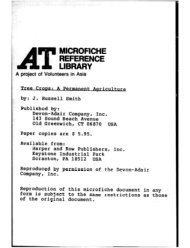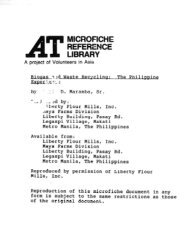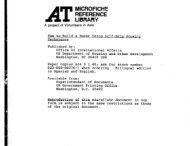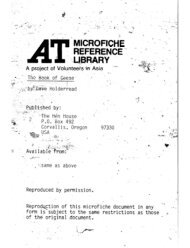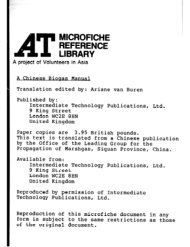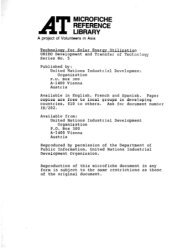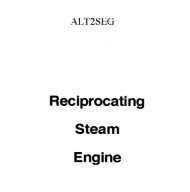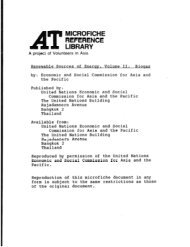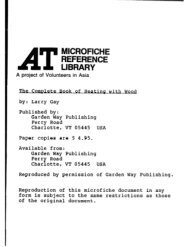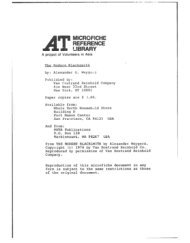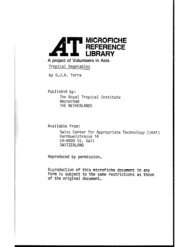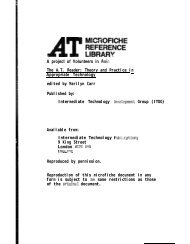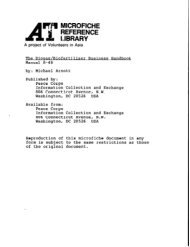Vegetation as an indicator of high wind velocity
Vegetation as an indicator of high wind velocity
Vegetation as an indicator of high wind velocity
You also want an ePaper? Increase the reach of your titles
YUMPU automatically turns print PDFs into web optimized ePapers that Google loves.
j< : ‘I ., 2<br />
~cq>$,,+f.;; :r ::<br />
a, ,,~,-.r~~~,--c,, ,,~,i.r~~~,~,-,,, ,;1 ,^<br />
i,?~~~~!~~,~~~~:,,,l‘ i,?~~~~!~~,~~~~:,,,~‘ ,,., : ‘_ 0. ,._ ._ / ST I ,.,%~ -.; ._,,. ._,,. ;, /t i 1.8 A:-.* L .i _, ~. .; , ,.,;,“z .,_ ., ~ / r :. ,, :. ,, : .I,:: .-,: ,_ 1 _,._ + __ _ .‘ . .., ^.,( ..” . . “. ;- -- .,. q ,1<br />
(,‘3 !’ .;, ,.., ‘j<br />
‘$<br />
{<br />
Barth, I)., 1963: Wind,<br />
<strong>wind</strong>einflusses Baumform <strong>an</strong>d L<strong>an</strong>schaft: Eine Untersuchung des<br />
auf Baumform <strong>an</strong>d Kulturl<strong>an</strong>d s&aft am Beispiel<br />
',<br />
)<br />
,;<br />
,;<br />
des Mistralgebietes im fr<strong>an</strong>zosischem Rhonetal. In: Ereiburger<br />
Geographische<br />
Freiburg.<br />
Hefte, Heft 1, edited by F. Bartz <strong>an</strong>d W. Weischet. "'<br />
An excellent <strong>an</strong>d thorough paper on the problem <strong>of</strong> tree deforma-<br />
tion by the <strong>wind</strong>. A subjective index <strong>of</strong> .<strong>wind</strong> effects <strong>of</strong> trees is developed.<br />
No attempt is made to calibrate this index. There is <strong>an</strong> excellent<br />
bibliography on Europe<strong>an</strong> research with 121 references.<br />
B<strong>an</strong>n<strong>an</strong>, M.W. <strong>an</strong>d M. Bindra, 1970: The influence <strong>of</strong> <strong>wind</strong> on ring.width <strong>an</strong>d<br />
cell length in conifer stems. C<strong>an</strong>ad. J. Bot. 48: 255-259.<br />
This report deals with some <strong>of</strong> the relationships between <strong>wind</strong>,<br />
stem form, ring width, cell length <strong>an</strong>d frequency <strong>of</strong> multiplicative<br />
divisions in the cambium. Three species were studied: white spruce,<br />
lodgepole pine, <strong>an</strong>d e<strong>as</strong>tern white pine. In this study, the <strong>an</strong>nual rings<br />
were found to be narrow on the west side <strong>of</strong> the stem <strong>an</strong>d widest on the<br />
e<strong>as</strong>t side where the prevailing <strong>wind</strong> is from the west. The authors con-<br />
cluded that in these kind <strong>of</strong> sampled trees, the <strong>wind</strong> seems to be more<br />
potent th<strong>an</strong> sun in the determination <strong>of</strong> stem form. The differences in<br />
cell length for the opposite sides <strong>of</strong> the stem could not be related to a<br />
consistent one sided development <strong>of</strong> reaction wood. However, the develop-<br />
ment <strong>of</strong> shorter cells is favored due to the widening <strong>of</strong> the ring on the<br />
leeward side.<br />
Carlton, R.R., 1976: Influences <strong>of</strong> the duration <strong>of</strong> periodic sway on the<br />
stem form development <strong>of</strong> four-year-old Dougl<strong>as</strong>-fir (Pseudotsuga<br />
menziesii). unpublished M<strong>as</strong>ters Thesis, Oregon State University.<br />
This paper describes the effects on growth <strong>of</strong> mechnically<br />
induced sway. Signific<strong>an</strong>tly, Carlton found that stem diameter incre<strong>as</strong>es<br />
<strong>as</strong> the period <strong>of</strong> swaying incre<strong>as</strong>ed. The bibliography contains a good<br />
collection <strong>of</strong> recent papers on <strong>wind</strong> effects on trees.<br />
Fritts, H.C., 1976: Tree Rings <strong>an</strong>d Climate. Academic Press, London.<br />
This book summarizes the b<strong>as</strong>ic principles currently employed in<br />
dendroclimatology <strong>an</strong>d illustrates how these concepts <strong>an</strong>d principles are<br />
applied to the reconstruction <strong>of</strong> climatic variation that h<strong>as</strong> occurred in<br />
the p<strong>as</strong>t. This book is not addressed to the problem using trees <strong>as</strong> <strong>an</strong><br />
<strong>indicator</strong> <strong>of</strong> <strong>wind</strong>s but provides excellent source <strong>of</strong> information on the<br />
effect <strong>of</strong> other climatic <strong>an</strong>d environmental variables on tree growth.<br />
Heiligm<strong>an</strong>n, R. <strong>an</strong>d G. Schneider, 1974: Effects <strong>of</strong> <strong>wind</strong> <strong>an</strong>d soil moisture<br />
on black walnut seedlings. For. Sci. 20: 331-335.<br />
This study is concerned with the influence <strong>of</strong> different combina-<br />
tions <strong>of</strong> typical <strong>wind</strong> velocities <strong>an</strong>d soil moisture regimes on the growth<br />
<strong>of</strong> black walnut seedlings. High <strong>wind</strong> <strong>velocity</strong> reduced stem, foliage, shoot<br />
,<br />
- 54 -



